Robert Herbert Carcasson was an English entomologist who specialised in butterflies, but also authored two field guides to tropical fishes. He joined the Coryndon Museum, Nairobi, as senior entomologist in 1956. He then became its director, under the museum's new name of the Natural History Museum from 1961 to 1968. During this time, he was awarded a PhD for his studies on African hawkmoths. From 1969 to 1971 he was Chief Curator of the Centennial Museum, Vancouver, Canada. In 1972 he travelled in Polynesia, Melanesia, Australia, Malaysia, Sri Lanka, Seychelles and East Africa for production of two field guides to coral reef fish of the Indo-Pacific region. From 1973 to 1979 he was Curator of Entomology at the Museum of British Columbia. He died of cancer. Somewhat a polymath, he was fluent in a number of languages, and produced the illustrations to a number of his works, culminating in hundreds of colour and line drawings of fishes for his reef fish field guides.

Hippotion balsaminae is a moth of the family Sphingidae. It is common in most habitats throughout the Ethiopian Region, including Madagascar.
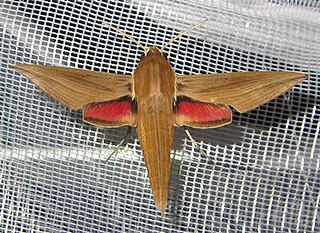
Hippotion eson is a moth of the family Sphingidae. It is very common in most habitats throughout the Ethiopian Region, including Madagascar and the Seychelles. It is a migratory species.
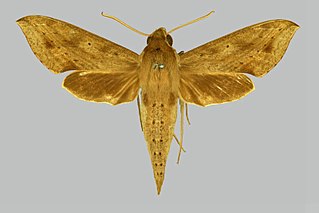
Hippotion irregularis is a moth of the family Sphingidae. It is known from forests from Liberia to Congo, Uganda and western Kenya. It is also found in the Usambara area of Tanzania.
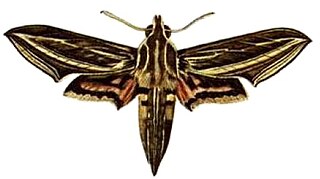
Hippotion osiris is a moth of the family Sphingidae. It is common throughout most of the Ethiopian Region, including Madagascar and the Seychelles. Occasional vagrants have been recorded from Spain. It is uncommon on the East African coast. This species is an occasional migrant.

Macroglossum trochilus, the African hummingbird hawk-moth, is a moth of the family Sphingidae. The species was first described by Jacob Hübner in 1823. It is very common in most habitats throughout southern and eastern Africa and in the Comoro Islands.

Rhadinopasa is a monotypic moth genus in the family Sphingidae erected by Ferdinand Karsch in 1891. Its only species, Rhadinopasa hornimani, was first described by Herbert Druce in 1880. It is known from lowland forest from Gabon, Cameroon and the Central African Republic to the Democratic Republic of the Congo to Uganda and Tanzania.

Andriasa contraria is a moth of the family Sphingidae. It is known from tropical Africa, including Kenya, Cameroon and South Africa. It is a very variable species and is common in all habitats except deserts and high mountains.
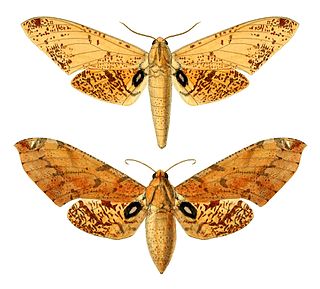
Platysphinx stigmatica is a moth of the family Sphingidae. It is known from forests from Nigeria to the Congo, Angola and western Uganda.

Platysphinx piabilis is a moth of the family Sphingidae first described by William Lucas Distant in 1897. It is known from savanna and other open habitats in southern and eastern Africa.

Neopolyptychus pygarga is a moth of the family Sphingidae. It is known from forests in western Africa, including Cameroon and Nigeria.
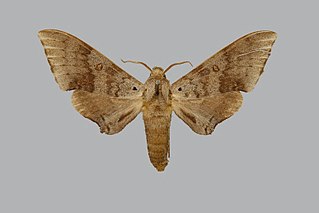
Neopolyptychus prionites is a moth of the family Sphingidae. It is known from lowland forests and heavy woodland from Guinea to the Congo and western Uganda.

Polyptychoides grayii, or Gray's polyptychus, is a moth of the family Sphingidae. It is known from eastern Africa, south to South Africa.
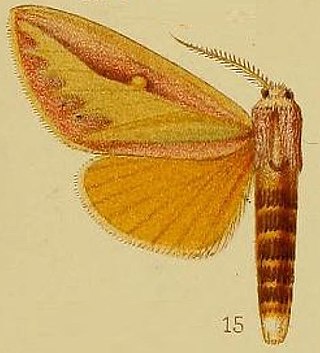
Leucophlebia afra is a moth of the family Sphingidae. It is found from Senegal to northern Uganda and Sudan in the east, and to Angola in the west.
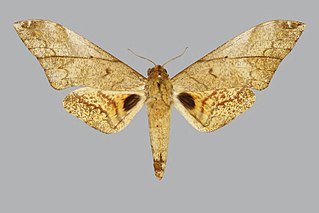
Platysphinx vicaria is a moth of the family Sphingidae. It is known from Sierra Leone to Nigeria, Cameroon and the Central African Republic.

Temnora funebris is a moth of the family Sphingidae first described by William Jacob Holland in 1893. It is known from the forests of western Africa to the Democratic Republic of the Congo, Uganda, Tanzania and Zimbabwe.

Temnora elegans is a moth of the family Sphingidae. It is known from western Africa and in savanna from Angola to Zambia, Zimbabwe, Malawi and East Africa.

Nephele comma is a moth of the family Sphingidae. It is very common throughout the Ethiopian Region, including Madagascar.

Nephele peneus is a moth of the family Sphingidae. It is known from forests and woodland from Senegal to East Africa, Angola and Delagoa Bay.
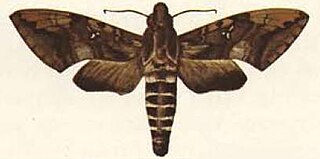
Nephele accentifera, the accented hawk, is a moth of the family Sphingidae. The species was first described by Palisot de Beauvois in 1821. It is common in most habitats throughout the Ethiopian Region, excluding Madagascar and the Cape Peninsula.

















